
Close


Brussels - Belgium
Weaving is the common thread of all artistic interventions. It simultaneously expresses flexibility, patience, agility as well as the feminine principle facing the monumentality of the architecture of the buildings. It also embodies the power of the collective both in its force of proposal and action as well as in its capacity for resilience. We have created a complex and rich, joyful and sparkling textile, whose warp is made up of the colors of the 27 flags of the States of the Union and the weft of the flags of successive presidencies, a kind of data-weaving that we called L’Étoffe de l’Europe® – that means “the Fabric of Europe”, as obvious.
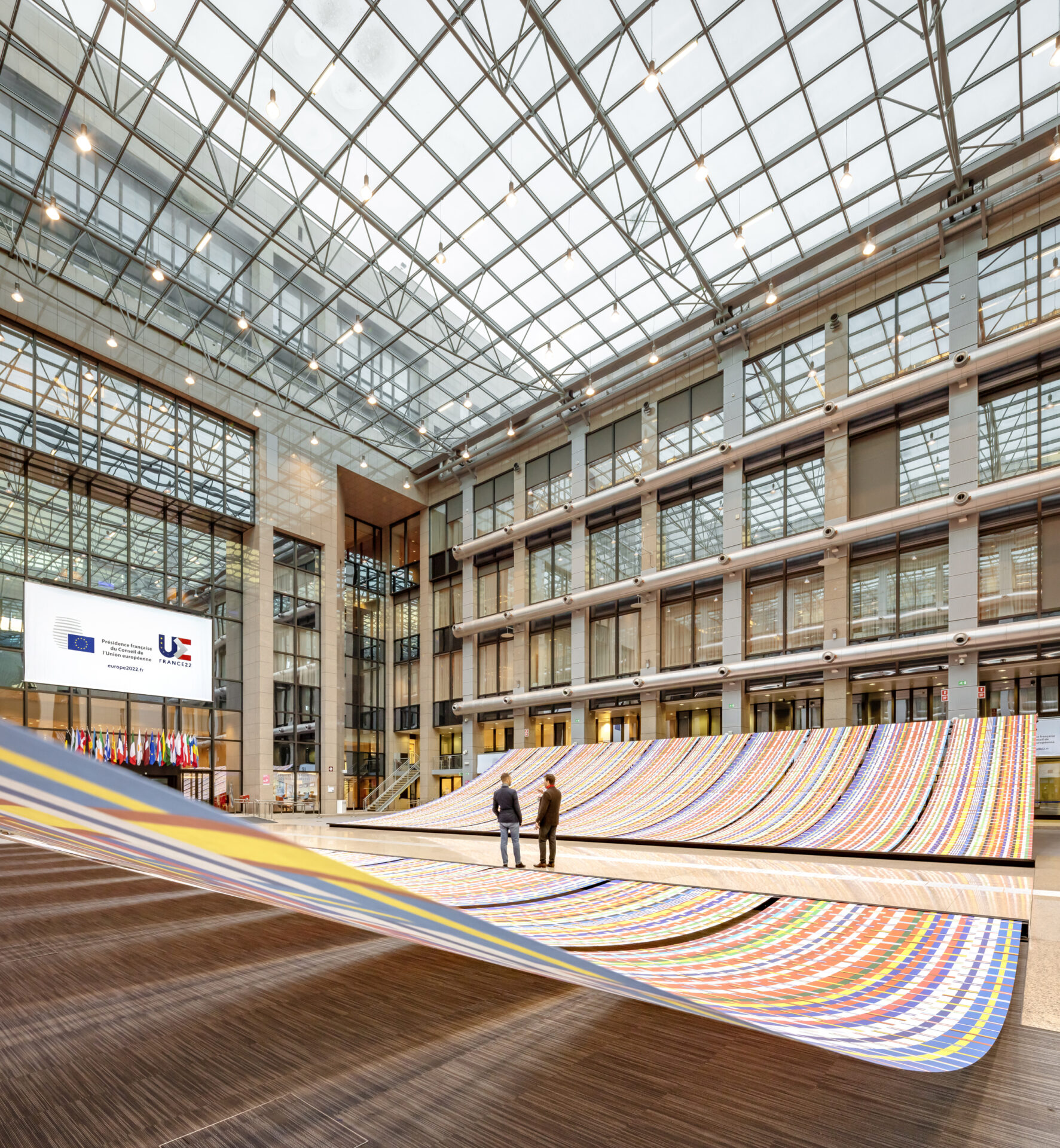
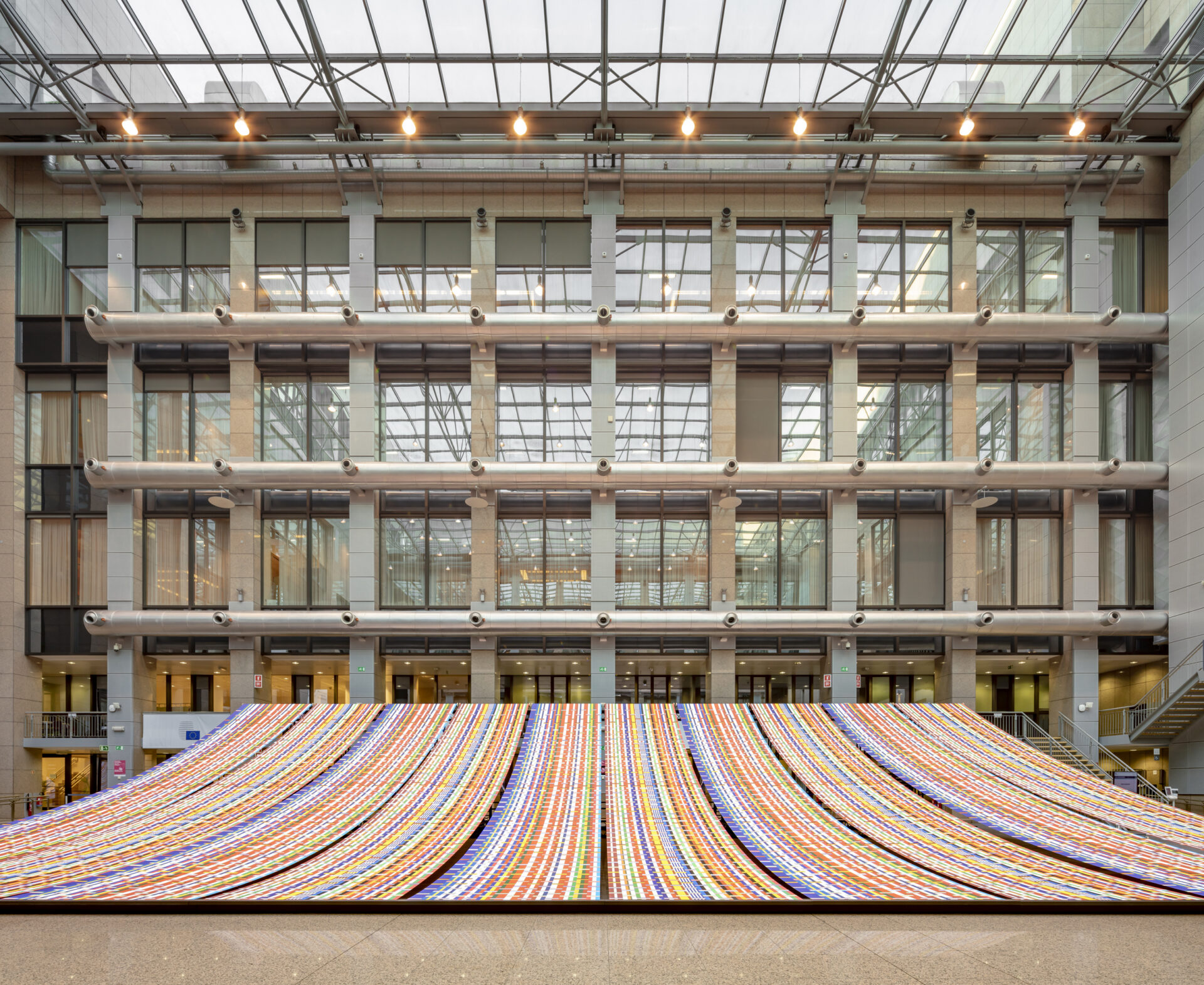
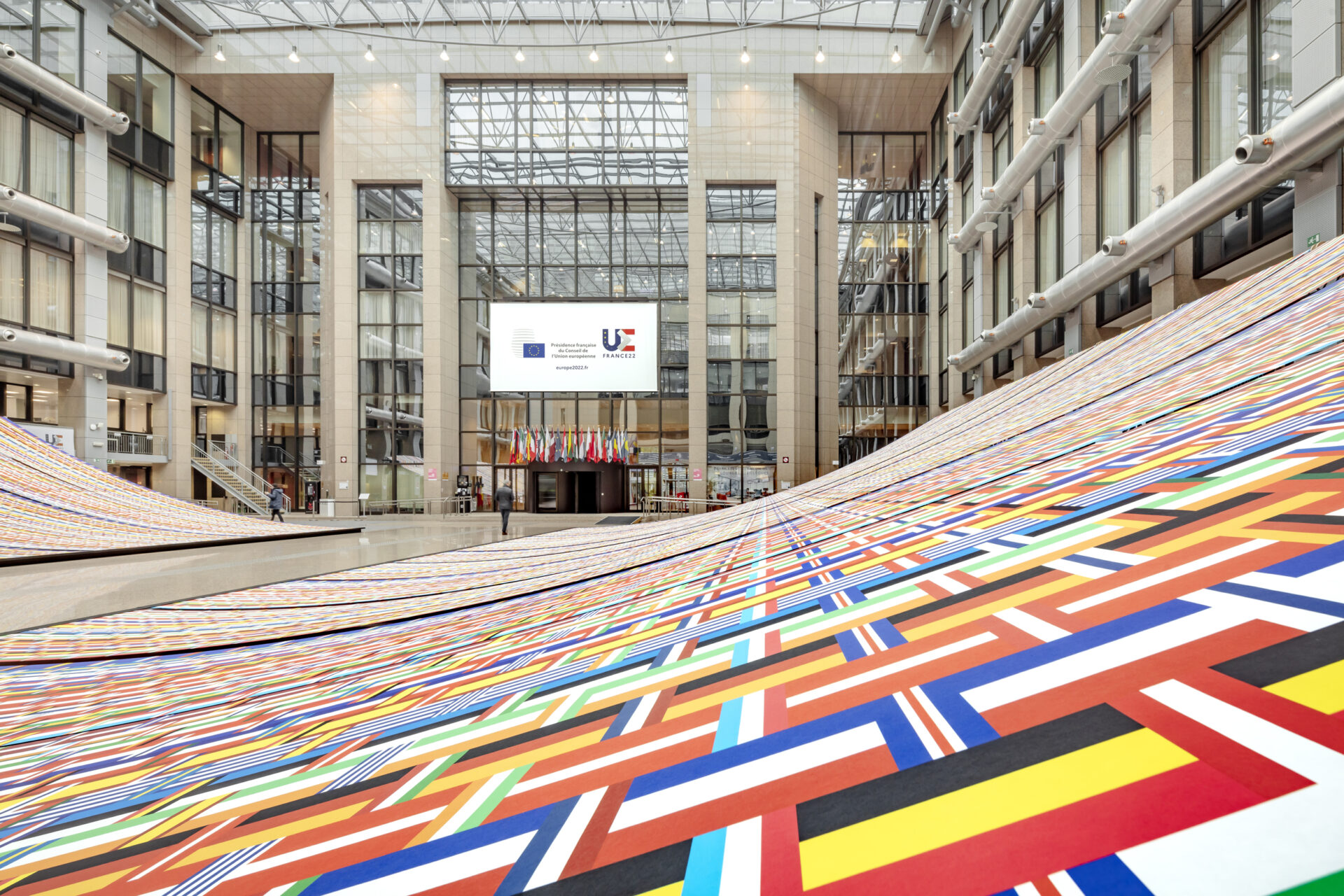
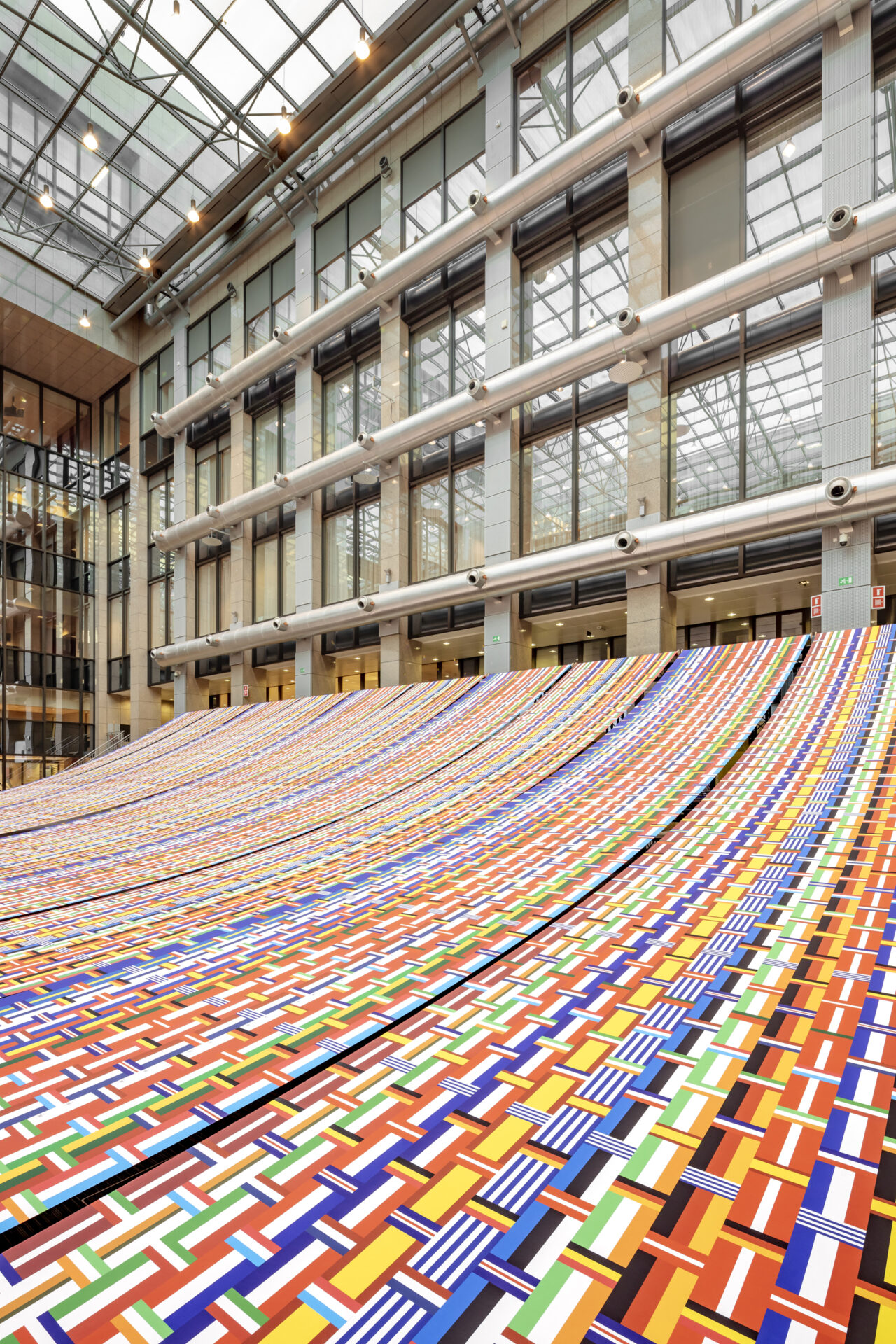
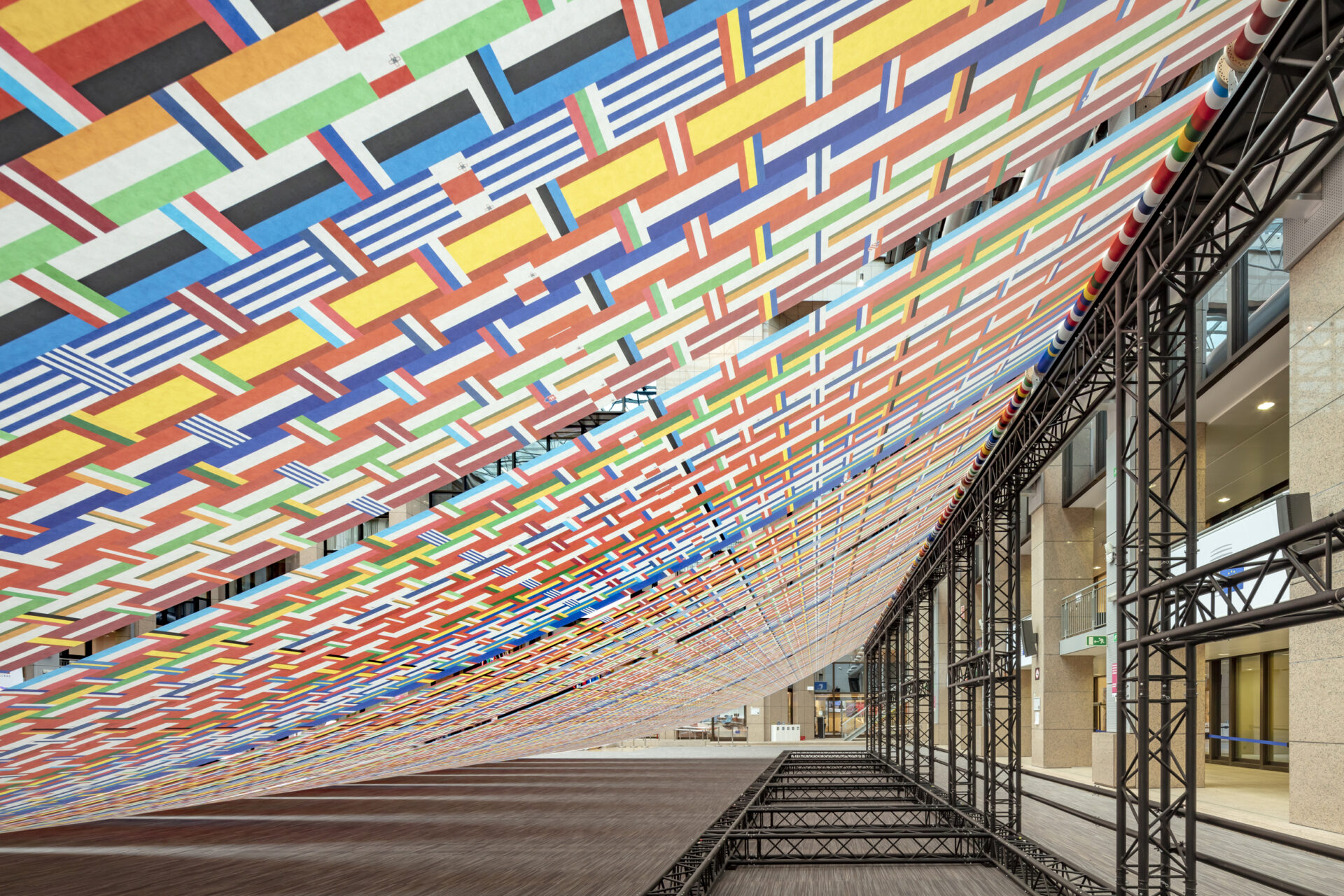
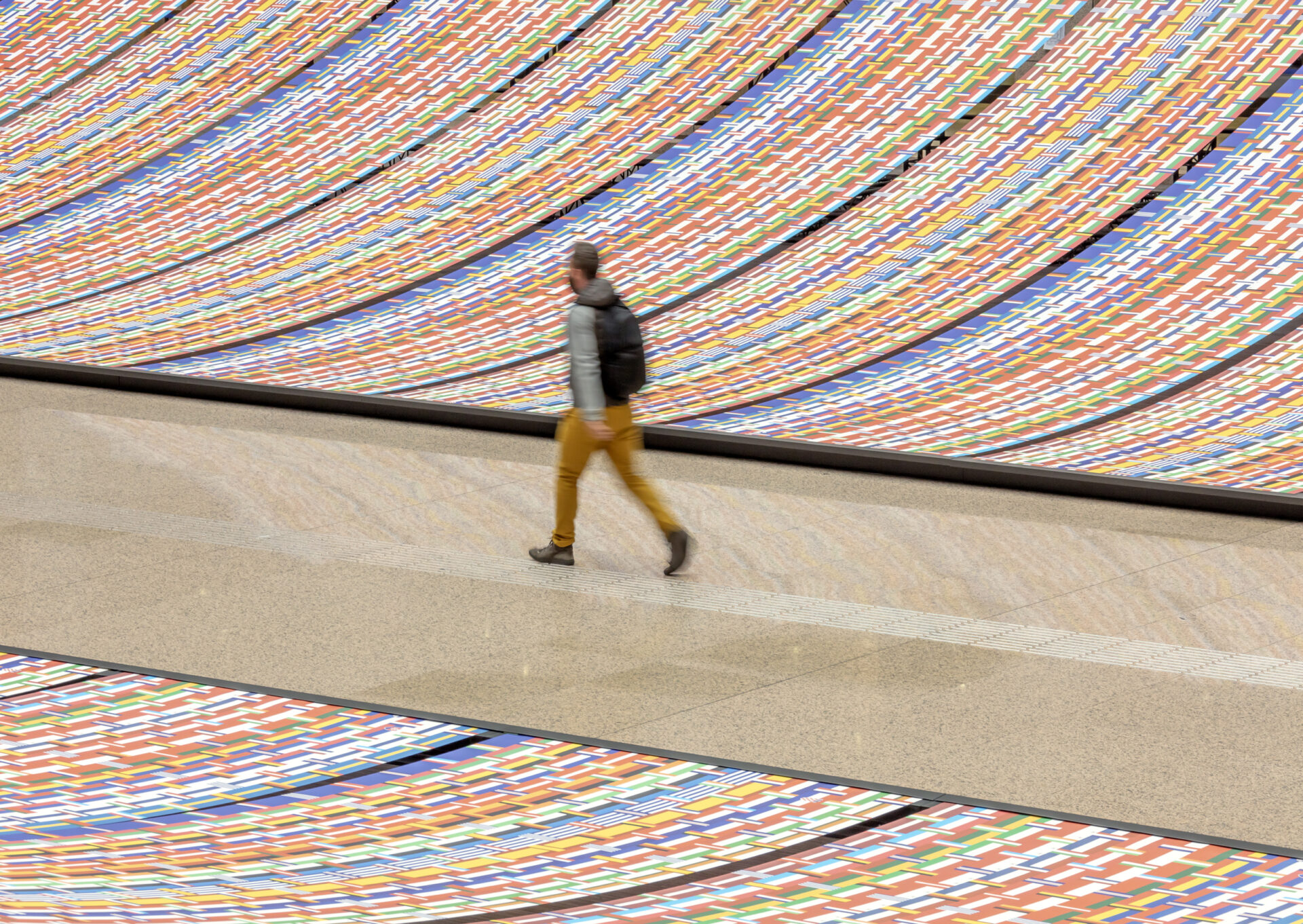
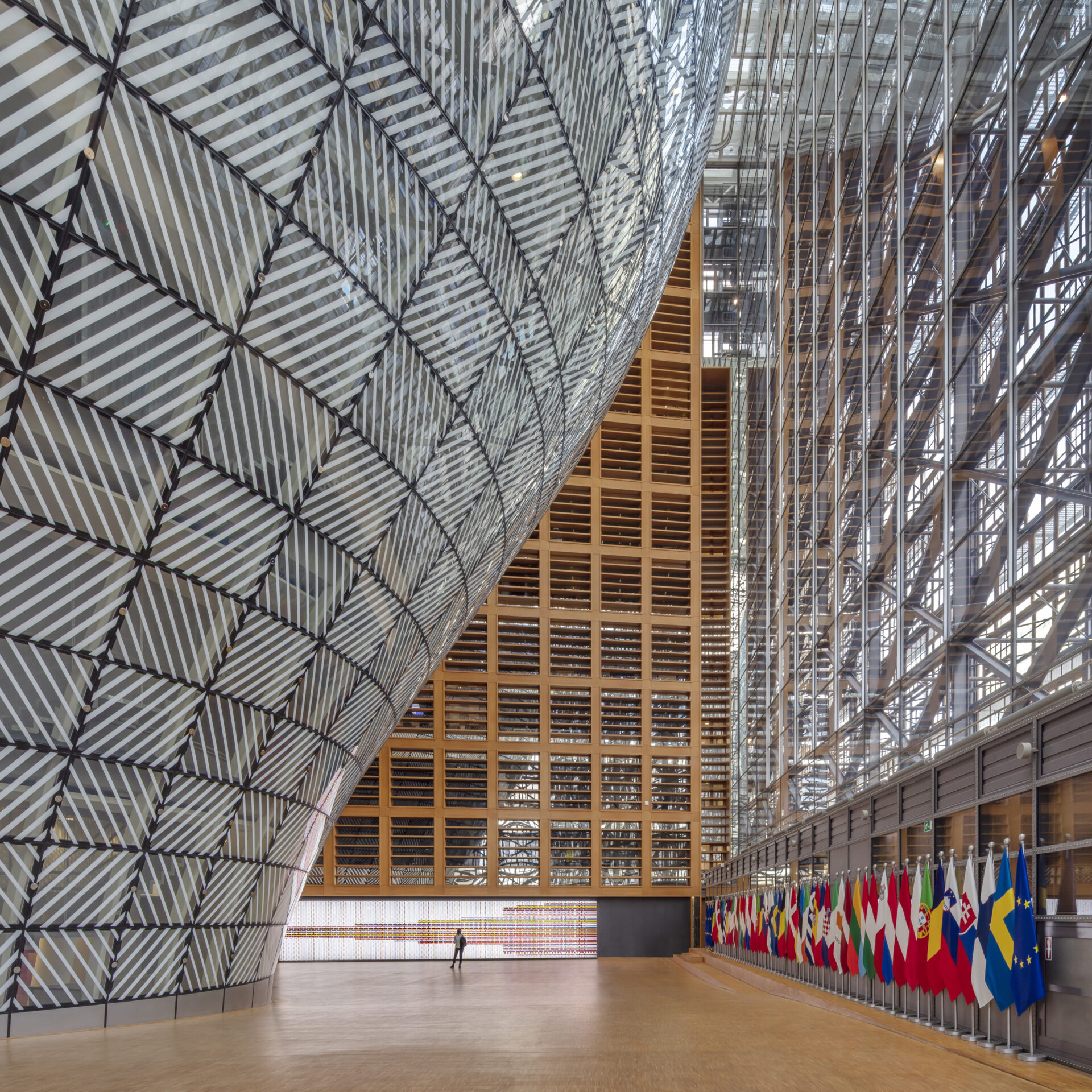


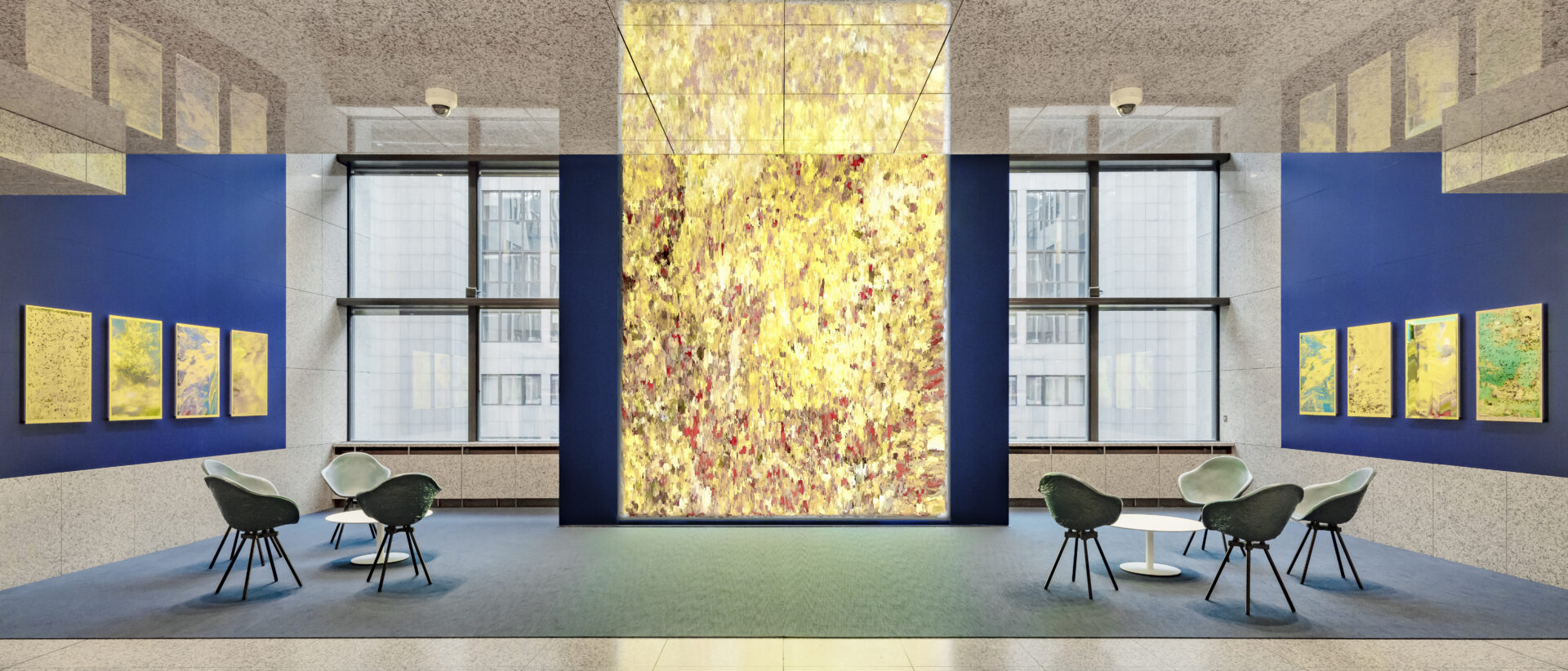
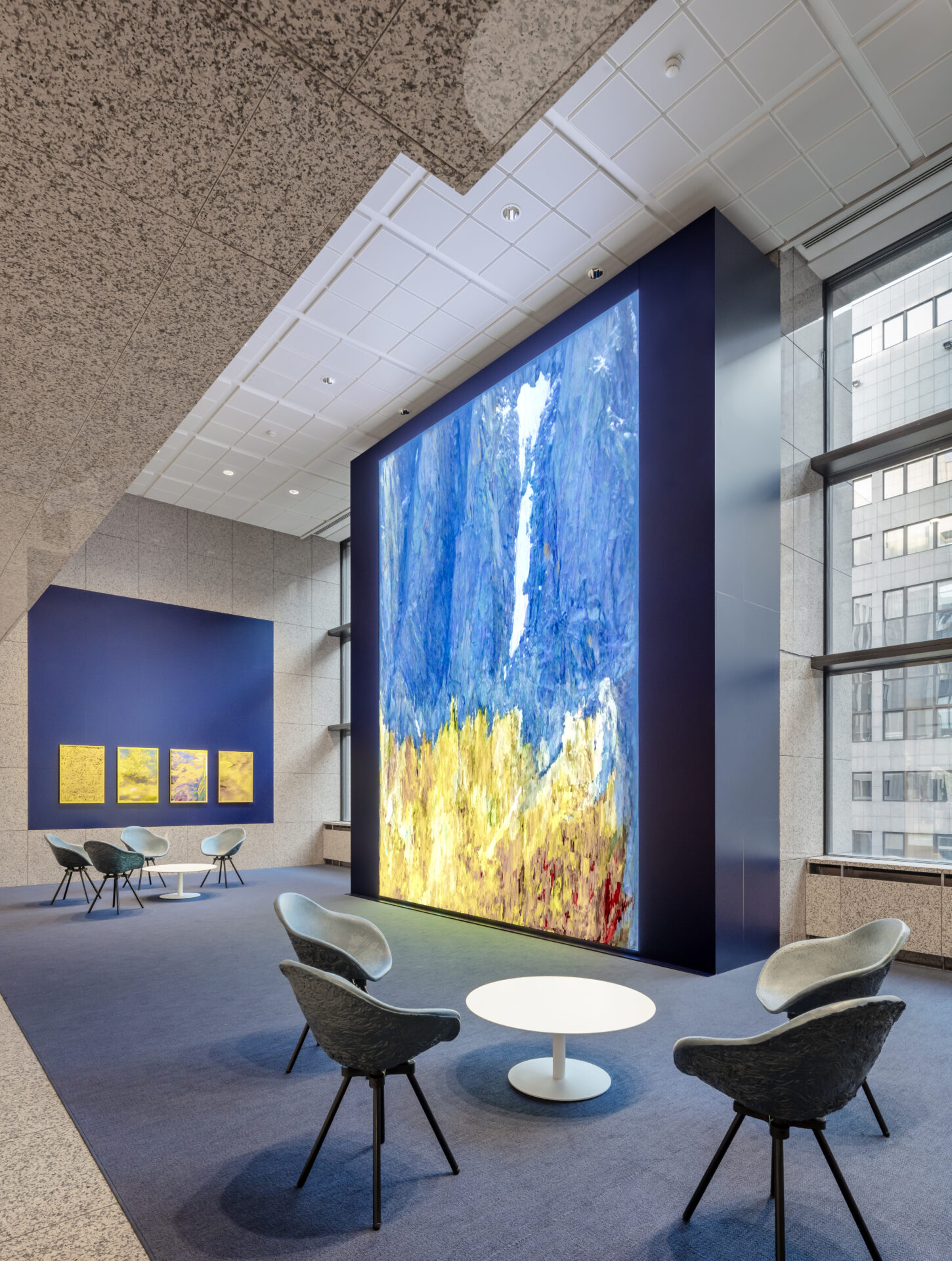
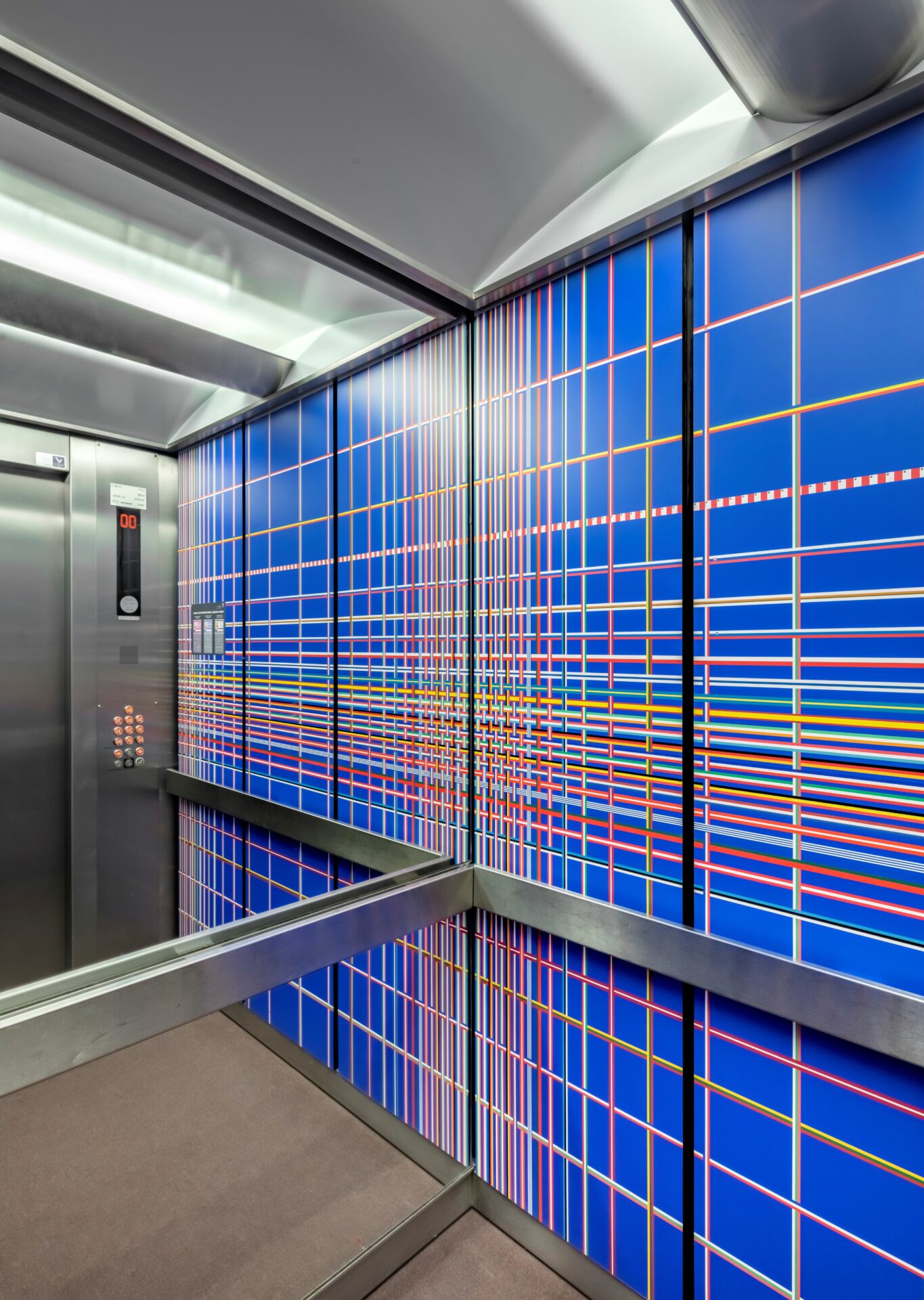
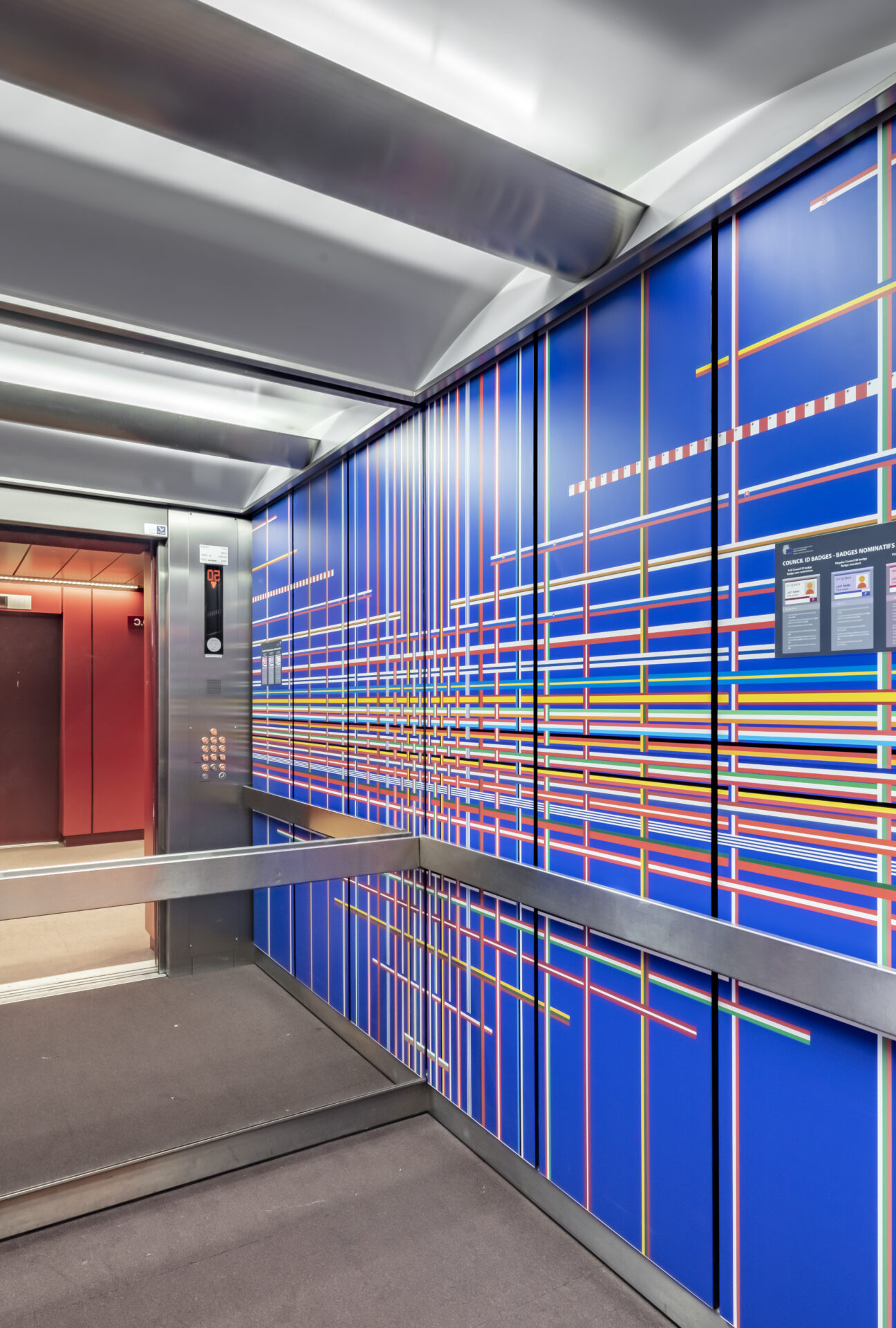
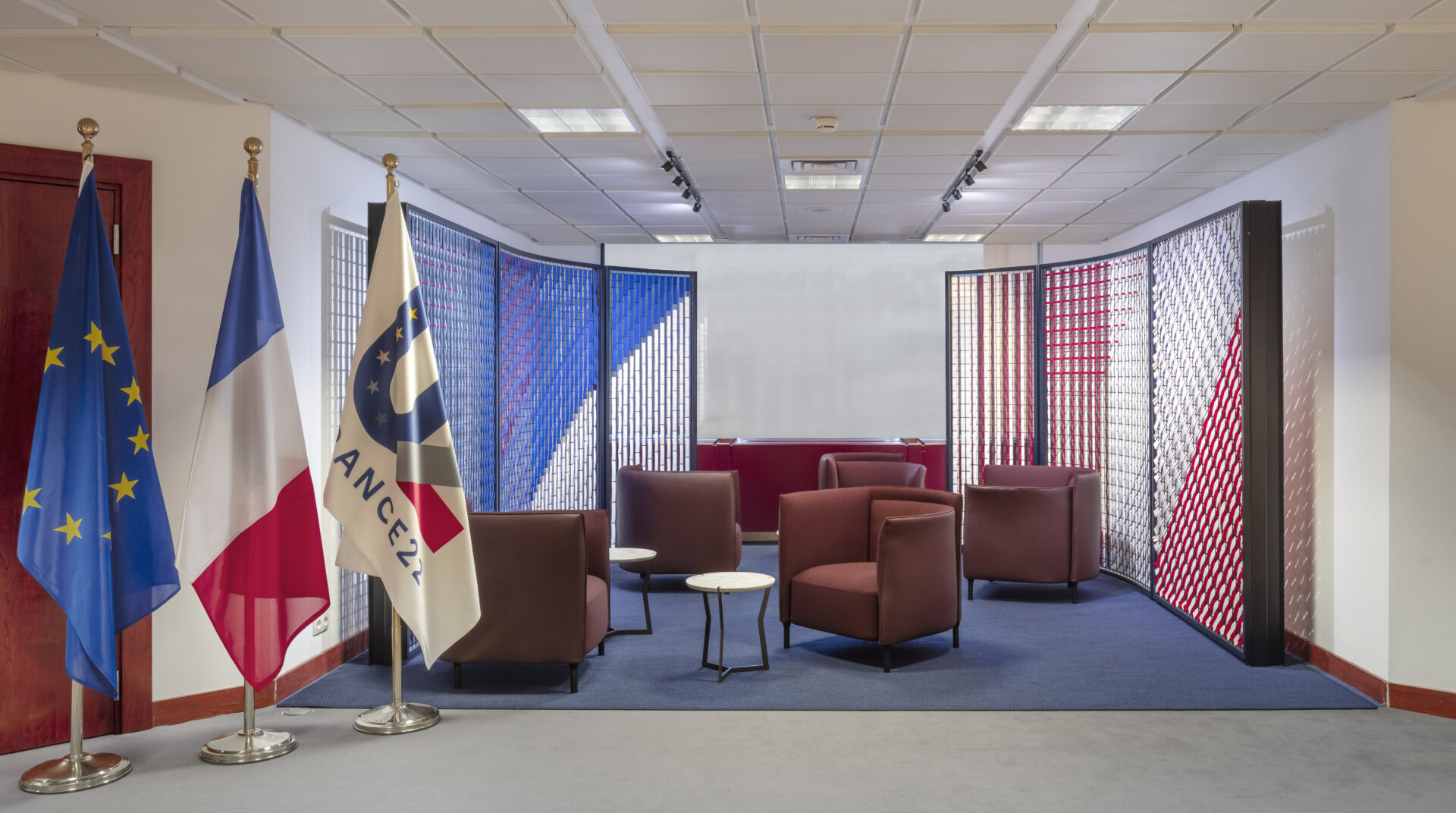

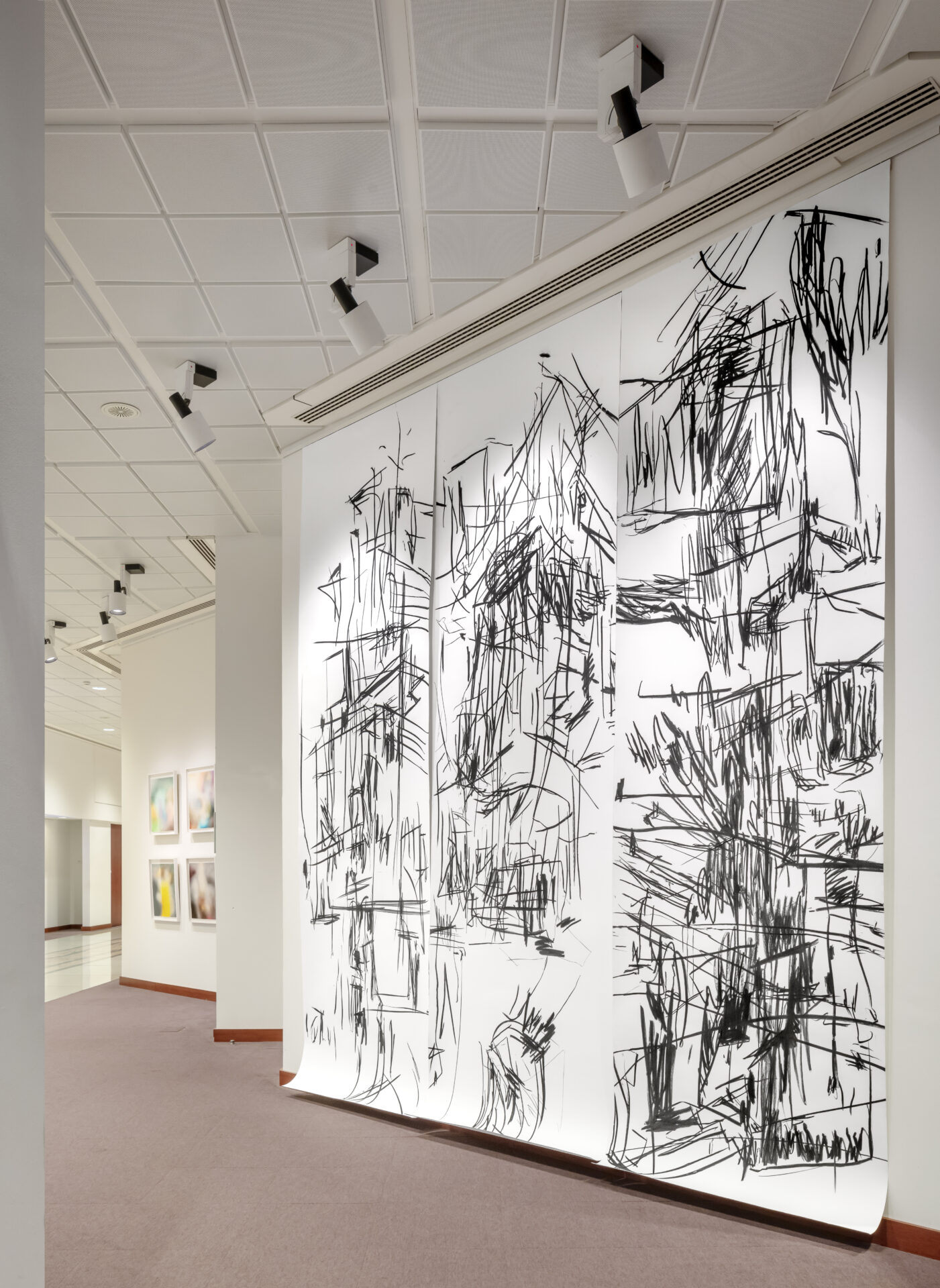
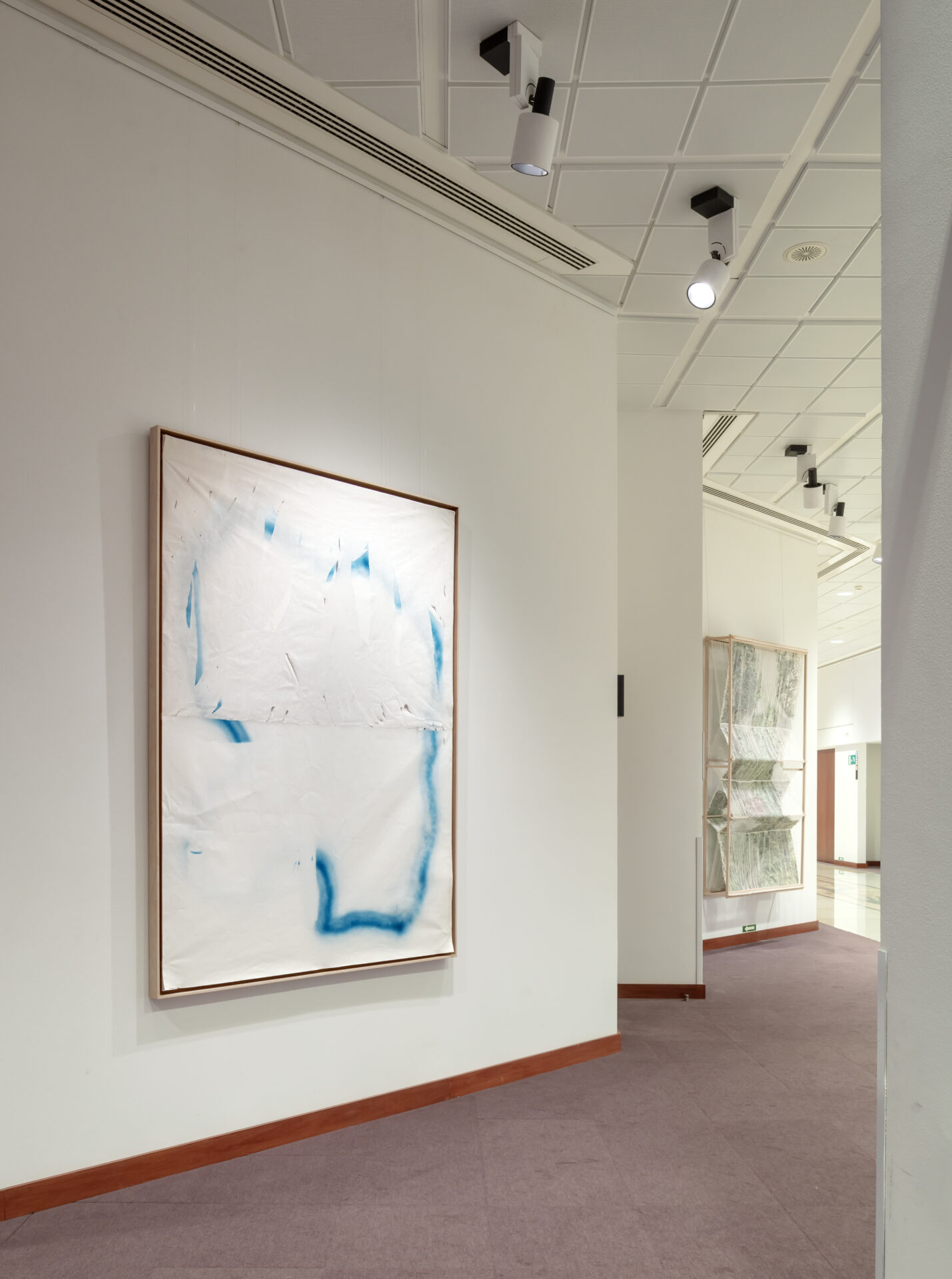
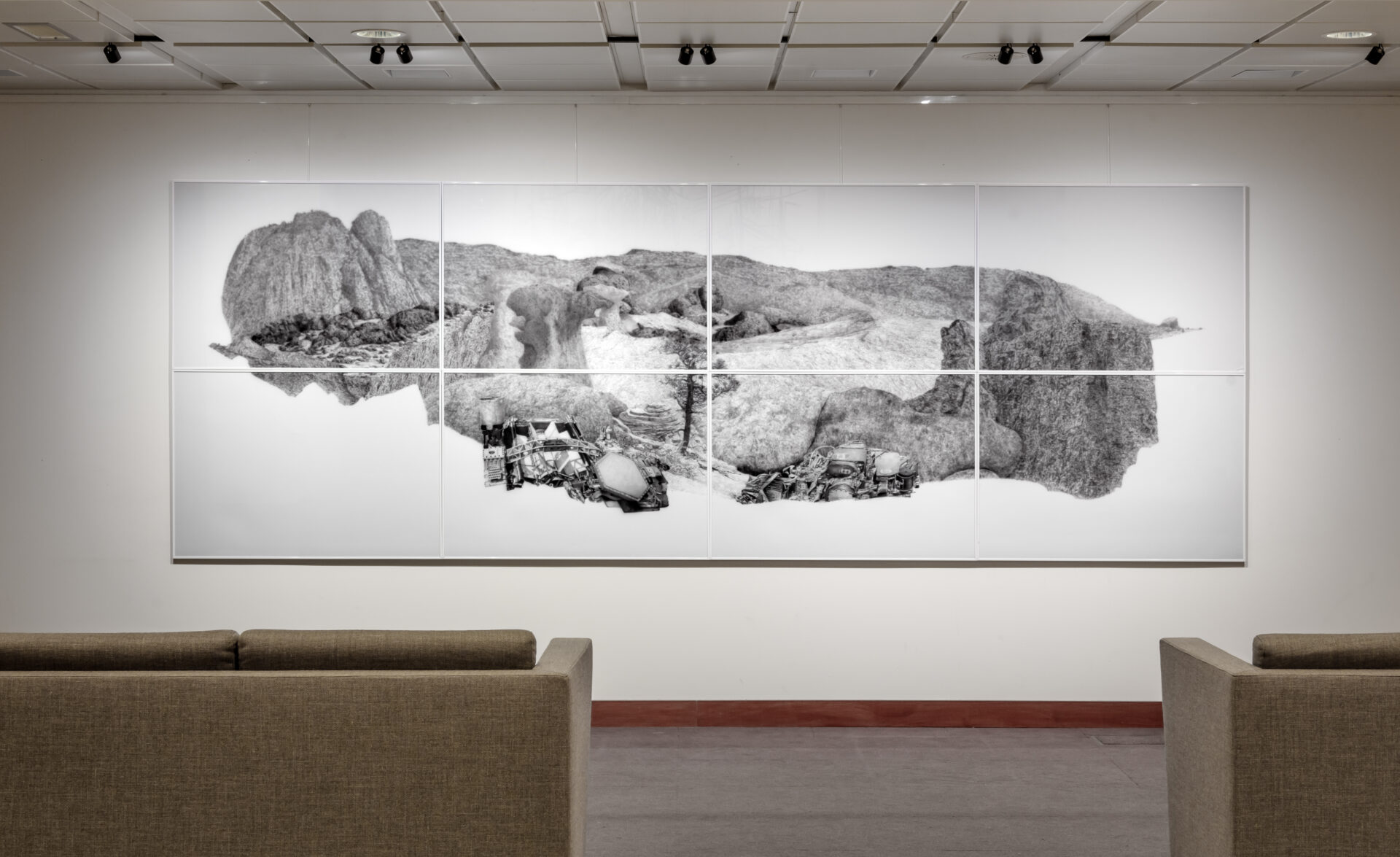

Location
Justus Lipsius and Europa Buildings of the Council of the European Union
Client
Services du Premier ministre
Secrétariat général de la présidence française du Conseil de l'Union européenne
Institut français, AMO
Year
1 January - 30 June 2022
Phase
Completed
Mission
Artistic installations in the buildings of the Council of the European Union for the French Presidency 2022
Awards
2 Muse Design Awards 2023 (New York):
- Gold Winner: Interior Design - Installation
- Silver Winner: Interior Design – Cultural
2 Online Design Awards 2023:
- Art Direction
- Empowering Diversity
Indigo Design Awards 2023 :
- Gold Winner – Integrated Graphic Design
IDA International Design Awards 2022 :
- Gold Winner – Print / Signs, Exhibits and POP Displays
3 DNA Paris Design Awards 2022 :
- Grand prix Graphic Design of the Year
- Prix Interior Design Installation
- Prix Graphic Design/Colorful project
Since the birth of the European Union as an institution, men and women have patiently woven together the threads of this entity, first economic, then political, founded by six States, gradually joined by others, to form today a group of 27 States that bring together nearly 450 million citizens whose diversity is beyond question.
Europe’s power and wealth are indisputable. However, its values and objectives must be constantly reaffirmed because nothing can be taken for granted, as in any great cause. Its strength lies in its formidable capacity for collective and collaborative creation, which is constantly being adjusted, just as a ship maintains its course in relation to the wind, the sea and the swell.
It is this belonging to a collective that makes us grow and this relentless weaving of a common dynamic that allows Europe to be revived today in the global health, economic and political context.
Power, revival and belonging, the keys to France’s project for these six months are thus embodied in all the spaces made available to the French Presidency to show its presence in the two buildings, Juste Lipse and Europa.
Weaving is the common thread running through all the artistic interventions. It expresses flexibility, patience, agility, the feminine principle in the face of the monumentality of the architecture of the buildings, and the collective in its strength of proposal and action but also in its capacity for resilience.
We have created a complex and rich, joyful and sparkling textile, the warp of which is made up of the colours of the 27 flags of the States of the Union and the weft of the flags of the successive presidencies, a sort of data-weaving that we have called L’Étoffe de l’Europe® (the Fabric of Europe), as a matter of course.
This fabric is made up of the material, values and projects that the institutions, nations and citizens of Europe weave together, while expressing the diversity of their cultures: together they participate in the weaving of a common work.
L’Étoffe de l’Europe® has become the name of the whole project.
It embodies the paradigm shift of the environmental transition. Thus, it was designed with a view to being exemplary in this respect, both in the overall approach to its eco-design and management of its economy and in its manufacture: low consumption of raw materials and energy, recycling of all equipment and materials and waste, short production and transport circuits.
L’Étoffe de l’Europe® takes several artistic forms – architectural, scenographic, graphic, digital and textile – through seven dedicated spaces within the buildings with, in particular, the monumental 650 m2 textile installation at the heart of the Justus Lipsius Atrium and a 16-metre long data-weaving fresco in the Europa Forum via the 12 lifts in the Justus Lipsius building.
It is also deployed in French creations in several other artistic fields:
First of all, Aour Europe: the monumental and printed audiovisual work by the artist Jacques Perconte is a weaving of images of nature. It explores the European landscapes that write his personal history. He invites us to take a breath. His filmic work, which appears to be highly technological, is deeply ecological.
Then Intersection(s), a line of screens woven by textile designer Jeanne Goutelle from industrial waste from Saint-Etienne, illustrating the revival of textile arts at the frontiers of art, craft and design.
Finally, the project offers a European showcase for young French creation and design through :
the exhibition Décors et paysages, curated by Lola Meotti, of 6 young talents from the emerging French art scene living in Belgium: Léa Bélooussovitch, Jérôme Bonvalot, Vincent Chenut, Loup Lejeune, Lise Peroi, Lucien Roux.
the Gravêne line of chairs made of recycled plastic, published by Maximum.
the Star line of coffee tables by designer Olivier Gagnère, published by Coédition,
and finally, the Hémicycle line of furniture by designer Philippe Nigro in partnership with the Mobilier national.
Request project PDF
Architects, Exhibition Designers, lead firm :
Ateliers Adeline Rispal
Graphic Design and Creation :
SI | Studio Irrésistible
Lighting Design :
Les éclaireurs
Textile Designer :
Jeanne Goutelle Atelier
Plastician, Experimental Film Director :
Jacques Perconte
Technical advisor for multimedia equipment :
Innovision - Alain Dupuy
Executive Curator of the exhibition "Décors et paysages" :
Lola Meotti
French young artists living in Brussels on display :
Léa Belooussovitch - Jérôme Bonvalot - Vincent Chenut - Loup Lejeune - Elise Peroi - Lucien Roux
Design Ligne Hémicycle / Ligne Roset in collaboration with the Mobilier national :
Philippe Nigro
Design Ligne Star / Coedition :
Olivier Gagnère
Technical Control :
SOCOTEC BELGIUM
Contractor for the artistic installations :
Delta Production
Contractor for the multimedia equipment :
MHB
Prototypes for the Atrium installation :
Procédés Chenel
Contractor for the fabrication of Jeanne Goutelle metal screens :
Alex Cobas
Are you looking for an exhibition designer for your project? Let's talk about it!
We will contact you within 48 hours
Do you wish to be supported in the preparation of a project?
Let's meet!